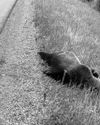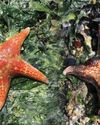
Surveying the deserted Batoche National Historic Site in May before the season opening, one can imagine the Métis people in the spring of 1884 preparing their fields and garden plots by the same windswept prairie and glittering South Saskatchewan River.
By that time, the descendants of voyageurs and bison hunters in the Catholic parish of St. Laurent, where the community of Batoche was located, now about 90 kilometres north of Saskatoon, had seen their way of life altered dramatically with the near annihilation of the bison and the decline of the fur trade. Many Métis, traditionally bison hunters, had previously lived a freedom-loving, travelling life throughout the northwest, wintering in the Prairies and returning in the spring to communities around the forks of the Assiniboine and Red rivers in what is now Manitoba.
Amid the freedom of the Prairies, the people created a new language, one that mixed Cree and French in a way that, as a linguist described it 100 years later, was unique. But in the late 19th century, few outsiders even knew the unwritten Michif language existed.
In the Red River area, the Métis’s struggle with the Hudson’s Bay Company and the government over land rights had culminated with the Red River Resistance of 1869-70, an armed political resistance led by Louis Riel. The Métis ultimately lost that fight, and the people of the new nation, as they declared themselves, were forced to disperse. Many went west to the Saskatchewan River area of the newly created North-West Territories. Over time, Métis in the north and elsewhere in the Red River area came up with other blendings of Cree and French, all of which they referred to as Michif.
Denne historien er fra September/October 2020-utgaven av Canadian Geographic.
Start din 7-dagers gratis prøveperiode på Magzter GOLD for å få tilgang til tusenvis av utvalgte premiumhistorier og 9000+ magasiner og aviser.
Allerede abonnent ? Logg på
Denne historien er fra September/October 2020-utgaven av Canadian Geographic.
Start din 7-dagers gratis prøveperiode på Magzter GOLD for å få tilgang til tusenvis av utvalgte premiumhistorier og 9000+ magasiner og aviser.
Allerede abonnent? Logg på

ANIMAL XING
THIS PAST SUMMER AN AMBITIOUS WILDLIFE UNDER/OVERPASS SYSTEM BROKE GROUND IN B.C. ON A DEADLY STRETCH OF HIGHWAY JUST WEST OF THE ALBERTA BORDER. HERE’S HOW IT HAPPENED.

Unearthing a giant
Almost 30 years ago, paleontologist Elizabeth “Betsy” Nicholls made a discovery of colossal proportions

WE DID THIS
AS THE IMPACTS OF GLOBAL WARMING BECOME INCREASINGLY EVIDENT, THE CONNECTIONS TO BIODIVERSITY LOSS ARE HARD TO IGNORE. CAN THIS FALL’S TWO KEY INTERNATIONAL CONFERENCES POINT US TO A NATURE-POSITIVE FUTURE?

The COOLEST COUNTRY
“The coolest country” celebrates the wonders of winter with an all-Canadian theme. The 20-page travel planner includes a bucket list from travel writer Robin Esrock, steamy spa ideas, ice fishing destinations, festival fun, northern itineraries and more!

KEEPER of the SEA
FROM BEING LABELLED DEVIL’S APRON BY FRUSTRATED FISHERMEN TO BEING LAUDED AS A SUSTAINABLE FOOD SOLUTION: HOW KELP’S POTENTIAL IS BEING REALIZED, JUST AS SCIENTISTS LEARN IT’S DECLINING

WILD THINGS
WILD CANADIAN GEOGRAPHIC PRESENTS THE WINNERS OF ITS ANNUAL CANADIAN WILDLIFE PHOTOGRAPHY OF THE YEAR COMPETITION

AN EMPTY LANDSCAPE
AFTER MORE THAN A MILLION YEARS ON EARTH, CARIBOU ARE UNDER THREAT OF GLOBAL EXTINCTION. THE PRECIPITOUS DECLINE OF THE ONCE MIGHTY HERDS IS A TRAGEDY THAT IS HARD TO WATCH — AND EVEN HARDER TO REVERSE.

NORTHERN EXPOSURE
BON INTO A CARIBOU-HUNTING CREE FAMILY IN NORTHERN MANITOBA, ACCLAIMED PLAYWRIGHT AND NOVELIST. TOMSON HIGHWAYS PAYS TRIBUTE TO THE MAGICAL WORLD OF HIS CHILDHOOD IN PERMANENT ASTONISHMENT

INTO THE ARCTIC
CANADIAN PAINTER AND FILMMAKER CORY TRÉPANIER EXPLORES THE SUBLIME AND RAPIDLY CHANGING CANADIAN ARCTIC

Under the ice
Until the last decade, we knew little about what lay beneath the Arctic ice. Now scientists and explorers are shedding light on this vanishing world.